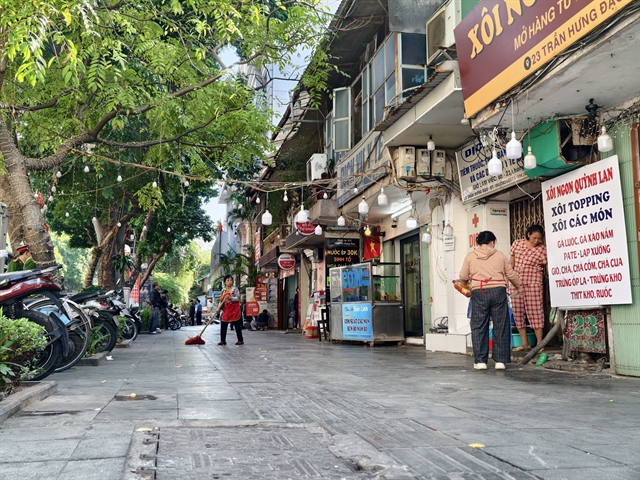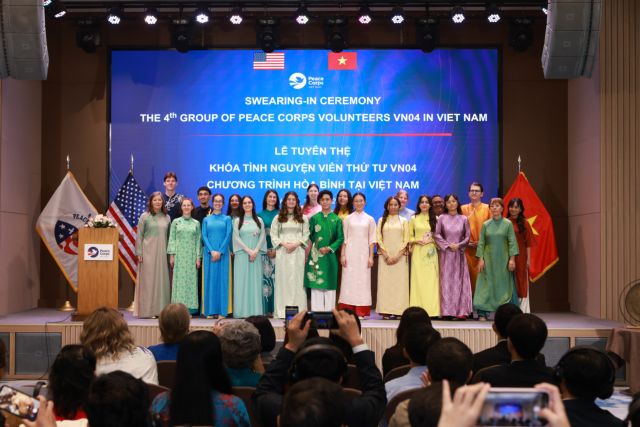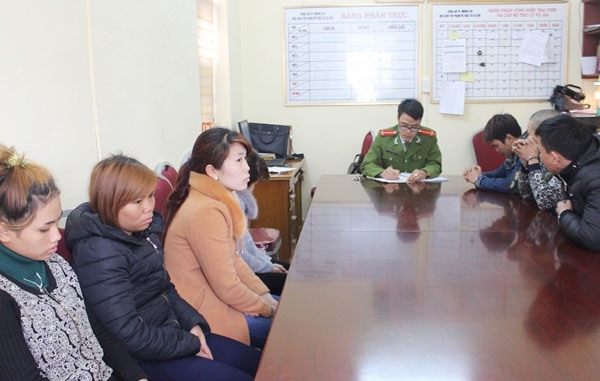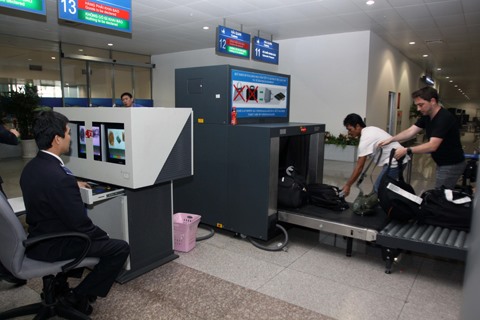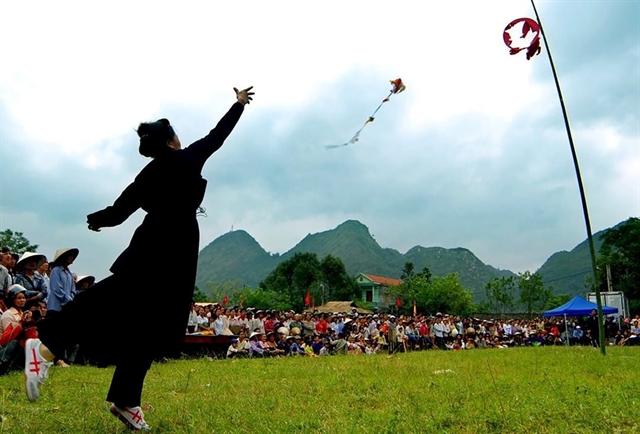
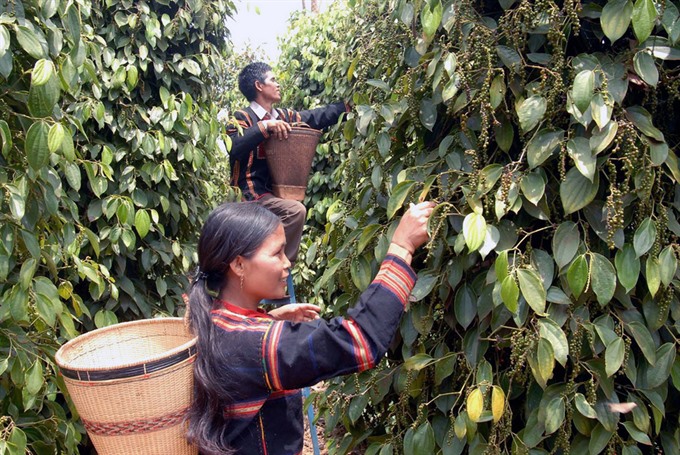 |
| Ethnic minority farmers harvest pepper in Ia Hrú Commune, Chư Sê District in the Central Highlands province of Gia Lai. High-tech agriculture is viewed as a viable course to improve people’s lives. - VNA/VNS Photo Sỹ Huynh |
HÀ NỘI - The Central Highlands provinces this year need to continue adjusting their growth models towards enhancing quality, efficiency and competitiveness, a senior official says.
Tô Lâm, Head of the Steering Committee for the Central Highlands Region, said in meeting with local authorities last week that the provinces should improve the way the have been tapping their potentials for socio-economic development, and focus in particular on improving the lot of ethnic minority groups.
Climate change adaptation will have to remain a major focus of this year’s activities, he added.
Provinces in the region should also accelerate restructuring in several areas and sectors including public investment, State-owned enterprises and agriculture while building new-style rural areas, he said.
Lâm advised the provinces to improve investment promotion for hi-tech agriculture, clean energy, processing industry, livestock breeding and tourism.
They should also intensify their focus on facilitating start-ups, developing local businesses and mobilising social resources for development, he said.
Despite significant socio-economic achievements last year, numerous shortcomings remained in land-use management, traffic infrastructure and land use-related issues, among others.
The region as a whole needs to strengthen land and forests management this year, allocate residential and cultivation land to needy households, increase reforestation and abide by the Prime Minister’s directions on forest management and protection, Lâm said.
The steering committee will work with ministries and sectors to propose to the Government mechanisms and incentives to ensure socio-economic development, regional and national security, he said.
It will also study and implement a regional connectivity mechanism in several sectors and for local goods; and developing a special credit system to promote sustainable poverty reduction.
Lâm said ministries, sectors and localities should help all the people enjoy the upcoming traditional Tết (Lunar New Year ) holidays by ensuring sufficient supply of quality goods as well as safe transportation.
Despite prolonged drought early last year, the region’s gross domestic product topped VNĐ151 trillion (US$6.56 billion) for a per capita GDP of VNĐ39.56 million ($1,720). It earned over $2 billion from exports, up 25.5 per cent and 14.8 per cent from 2015 and contributed VNĐ18.15 trillion ($799.6 million) to the State Budget.
Total social investments reached VNĐ78.79 trillion ($3.42 billion), a 7.2 per cent increase, Lâm said, adding that the number of newly-established firms and registered capital had also risen.
Thanks to technological advances and restructuring of crops, agricultural production recovered quickly after the drought and more attention was also paid to forest protection last year, he said.
Last year, the region provided vocational training to 78,000 people and created 113,000 jobs. The number of poor and near-poor household rates in the region reduced by 2.1 per cent and 2.4 per cent to 15 per cent and 4.5 per cent, respectively. -- VNS
